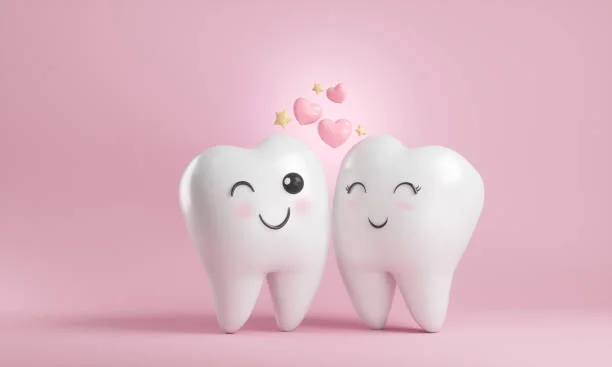Walk into any high-end dental practice and the before-and-after photos tell an interesting story. Rows of perfectly straight, blindingly white teeth or Perfect Teeth stare back from glossy frames. Yet something feels off about many of these transformations. The teeth might be flawless, but the smiles often look forced, unnatural, or just plain wrong for the person’s face.
Here’s what most people don’t realize: creating a beautiful smile isn’t about achieving dental perfection. It’s about finding the right balance between your teeth, your facial features, and your personality. A smile that works for one person can look completely out of place on someone else, even if the technical dental work is identical.
Get inspired, stay creative, and grow your vision with the related post.
The Harmony Factor
Think about the most attractive smiles you know – whether from celebrities, friends, or people you’ve met. Chances are, they’re not necessarily the most perfect teeth. What makes them striking is how well they complement the person’s overall appearance. A gentle, slightly rounded smile might suit someone with soft facial features, while a broader, more angular smile could work better for someone with stronger bone structure.
The width of your smile should relate to your face shape. Your tooth color should complement your skin tone. Even the length and shape of individual teeth should work with your facial proportions. When these elements align naturally, the result looks effortless and authentic.
Beyond Technical Perfection
Many people assume that cosmetic dentistry means getting the biggest, whitest, most uniform teeth possible. But dental professionals who understand facial aesthetics know better. The best porcelain veneers for teeth are designed to enhance your existing features rather than overwhelm them. They work with your natural tooth shape, gum line, and facial structure to create something that looks like an improved version of what nature gave you.
This approach requires more skill and artistry than simply applying a one-size-fits-all template. It means considering factors most people never think about: the curve of your lips when you laugh, how your teeth show when you speak normally, and whether your personality calls for a subtle enhancement or a more dramatic change.
The Individual Equation
Your age plays a role too. Teeth naturally wear down and change color over time, so a 50-year-old with teenager-bright teeth can look jarring. Similarly, someone with a petite frame might be overwhelmed by teeth sized for a larger person. The goal should be creating a smile that fits who you are now, not copying someone else’s look.
Facial symmetry matters, but perfect symmetry can actually look unnatural. Minor variations and imperfections often make a smile more appealing and authentic. Some of the most beautiful smiles have slight irregularities that give them character – a slightly longer canine tooth, a gentle curve instead of a straight line, or subtle color variations that mimic how natural teeth actually look.
The Artificial Trap
The biggest mistake people make is asking for someone else’s smile. Celebrity smiles work because they’re designed for that particular person’s features, bone structure, and overall look. Copying them exactly often results in what dentists call the “denture look” – technically perfect but obviously artificial.
Social media makes this worse. Filtered photos and professional lighting can make any dental work look amazing online, but the same result might look harsh or fake in real life. Natural lighting, different angles, and normal daily expressions reveal whether a smile truly works or just photographs well.
The most successful smile transformations focus on addressing specific concerns while maintaining authenticity. Maybe someone wants to fix a gap or brighten discolored teeth, but they don’t need to change everything about their smile to achieve their goals.
Natural Enhancement Strategies
Smart cosmetic dentistry works with your existing features rather than against them. This might mean slightly reshaping teeth instead of completely covering them, or choosing a tooth color that’s brighter than your natural shade but still believable for your age and complexion.
The process should involve looking at your entire face, not just your teeth or Perfect Teeth. How do your lips frame your smile? Do your teeth show when you speak normally? What happens when you laugh genuinely versus posing for a photo? These real-world considerations matter more than achieving some abstract ideal of perfection.
Timing matters too. Gradual improvements often look more natural than dramatic overnight changes. Sometimes the best approach involves multiple smaller treatments over time rather than one major transformation.
Getting It Right
The difference between a good smile makeover and a great one often comes down to restraint. Knowing when to stop, when less is more, and when perfection isn’t the goal. The best results enhance your natural attractiveness without announcing to the world that you’ve had work done.
This requires finding professionals who understand facial aesthetics, not just dental technique. Someone who listens to your concerns, considers your lifestyle and personality, and designs a treatment plan that makes sense for your individual situation.
A beautiful smile should feel like the best possible version of your natural smile – improved, enhanced, and perfected in ways that work specifically for you. When done right, people will notice that you look great without being able to pinpoint exactly what changed. That’s the mark of truly successful cosmetic dentistry: results that enhance your confidence while maintaining your authentic self.
The goal isn’t perfect teeth – it’s a perfect smile for you.
Experience the art of innovation and excellence—explore on Management Works Media.






